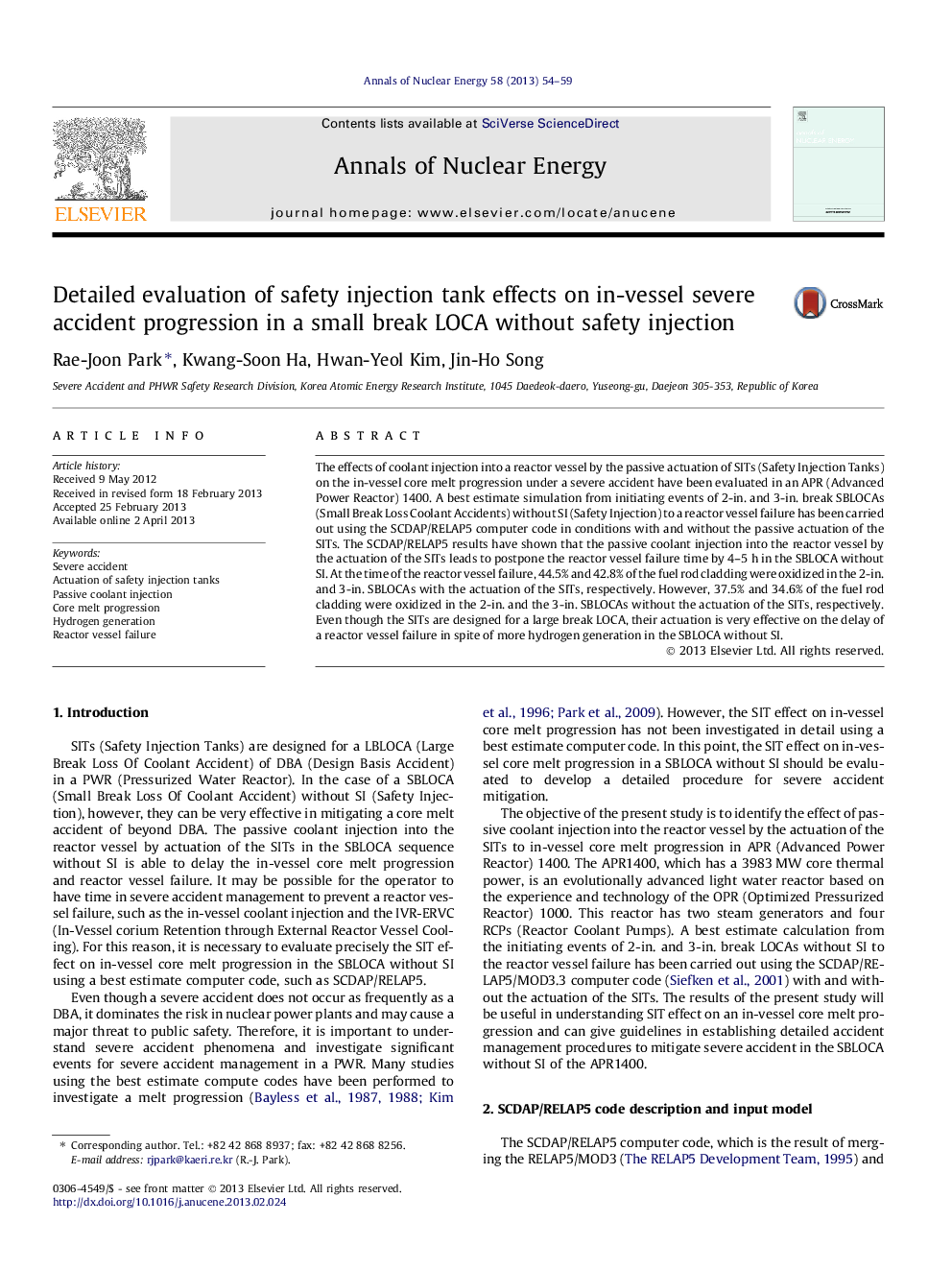| Article ID | Journal | Published Year | Pages | File Type |
|---|---|---|---|---|
| 1728594 | Annals of Nuclear Energy | 2013 | 6 Pages |
•Safety injection tank effects on in-vessel melt progression have been evaluated.•A best estimate simulation from initiating events to a reactor vessel failure has been carried out.•Small break loss coolant accidents without safety injection have been simulated using SCDAP/RELAP5 computer code.•Although the SIT actuation leads to greater hydrogen generation, the reactor vessel failure is delayed.•The present results can provide guidelines in establishing detailed accident management procedures to mitigate severe accidents.
The effects of coolant injection into a reactor vessel by the passive actuation of SITs (Safety Injection Tanks) on the in-vessel core melt progression under a severe accident have been evaluated in an APR (Advanced Power Reactor) 1400. A best estimate simulation from initiating events of 2-in. and 3-in. break SBLOCAs (Small Break Loss Coolant Accidents) without SI (Safety Injection) to a reactor vessel failure has been carried out using the SCDAP/RELAP5 computer code in conditions with and without the passive actuation of the SITs. The SCDAP/RELAP5 results have shown that the passive coolant injection into the reactor vessel by the actuation of the SITs leads to postpone the reactor vessel failure time by 4–5 h in the SBLOCA without SI. At the time of the reactor vessel failure, 44.5% and 42.8% of the fuel rod cladding were oxidized in the 2-in. and 3-in. SBLOCAs with the actuation of the SITs, respectively. However, 37.5% and 34.6% of the fuel rod cladding were oxidized in the 2-in. and the 3-in. SBLOCAs without the actuation of the SITs, respectively. Even though the SITs are designed for a large break LOCA, their actuation is very effective on the delay of a reactor vessel failure in spite of more hydrogen generation in the SBLOCA without SI.
